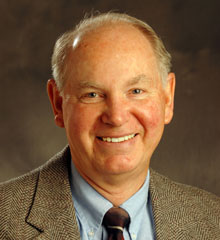Outline of Matthew
1. Title and Birth Narrative (Matthew 1:1-2:23)
The introduction, unique to Matthew’s Gospel, announces Jesus as God’s MessiahThe Messiah was the one who, it was believed, would come to free the people of Israel from bondage and exile. In Jewish thought the Messiah is the anticipated one who will come, as prophesied by Isaiah. In Christian thought Jesus of Nazareth is identified… More, links his story to God’s promises in Abraham and David, and sounds distinctive themes of the Gospel.
A. GenealogyGenealogy involves the study and tracing of families through the generations – in short, family history. One genealogy in Genesis traces the nations descended from Noah. In the New Testament Matthew traces the ancestry of Jesus back to Abraham, while Jesus’ genealogy in Luke goes… More (Matthew 1:1-17)
In a careful threefold structure of fourteen generations each, Jesus’ genealogy is linked from Abraham through David to Joseph, the husband of Mary.
B. The Birth of Jesus in Bethlehem (Matthew 1:18-25)
Tellingly addressed as “son of David,” Joseph is righteously obedient to the angel’s command to take Mary as his wife and to name his son Jesus as a sign that he will be savior and Emmanuel, marking the presence of God.
C. Visit of the Wise Men (Matthew 2:1-12)
The global and cosmic scope of the good news is marked by wise men drawn by a star to worship Jesus, while King Herod sees only threat and already plots to get rid of him.
D. The Escape to Egypt and Return (Matthew 2:13-23)
Once again warned by an angel in a dream, Joseph obediently flees with the baby Jesus and his mother to Egypt to escape Herod’s massacre of the infants; they return to Nazareth when the danger is past.
2. Jesus’ Galilean Ministry: Preparation (Matthew 3:1-4:22)
The preaching and baptismJesus was baptized (literally, “dipped”) in the Jordan River by John the Baptizer, at which time he was acclaimed from heaven as God’s Son, the Beloved. Much later baptism became one of the sacraments of the Church, the action by which a person is incorporated… More of John, the testing of Jesus in the wilderness, and Jesus’ initial preaching and call of disciples all prepare for the key narrative of the Galilean ministry of Jesus.
A. The Preaching of John (Matthew 3:1-12)
John appears in the wilderness calling for repentance and baptizing people in preparation for the coming of the kingdom of “one who is more powerful” who will baptize with the HolyHoly is a term that originally meant set apart for the worship or service of God. While the term may refer to people, objects, time, or places, holiness in Judaism and Christianity primarily denotes the realm of the divine More Spirit.
B. The Baptism of Jesus (Matthew 3:13-17)
Although initially reluctant, John consents to baptize Jesus in order to “fulfill all righteousness,” while a voice from heaven announces God’s pleasure in this beloved Son.
C. Jesus Is Tested by the Devil in the Wilderness (Matthew 4:1-11)
Jesus is led by the Spirit into the wilderness where he demonstrates his obedience and trust in God’s word in the face of three trial assaults by the devil.
D. Jesus Begins His Ministry in Galilee (Matthew 4:12-17)
After John’s arrest Jesus begins his ministry in Galilee in fulfillment of the prophecy regarding “light dawning in the darkness”; he thematically calls for repentance because “the kingdom of heaven has come near.”
E. Call of the First Disciples (Matthew 4:18-22)
In parallel scenes Jesus calls two sets of brother fishermen to follow him, and they immediately leave everything to follow him.
3. Jesus’ Galilean Ministry: Proclaiming in Word and Deed (Matthew 4:23-9:38)
Like the birth narrative, this narrative section is carefully structured to reveal Jesus as Messiah in word and deed (see 11:4-5). Framing summaries surround the two major sections, the first one focusing on Jesus as teacher, the second on Jesus as healer of every disease.
A. Framing Summary: Teaching, Preaching, Healing Every Disease (Matthew 4:23-25)
Jesus goes “throughout Galilee” teaching, preaching the good news, and healing “every disease” so that his fame spreads and crowds follow him.
B. Ministry in Word: Sermon on the Mount. First Discourse (Matthew 5:1-7:29)
Seated on a mountain and surrounded by the crowds, Jesus addresses his disciples and announces with authority God’s blessingBlessing is the asking for or the giving of God’s favor. Isaac was tricked into blessing Jacob instead of his firstborn Esau. At the Last Supper Jesus offered a blessing over bread and wine. To be blessed is to be favored by God. More that calls forth a new community of salt and light whose hearing and doing coalesce in a new kind of righteousness. This is the first of five major discourses of Jesus in Matthew (see 7:28-29).
C. Ministry in Deed: Cycle of Nine Miracles (Matthew 8:1-9:34)
Jesus’ Sermon on the Mount is now followed by a carefully structured narrative of three cycles of three miracles: Jesus heals a leperA leper is one who suffers from a chronic disease that eats away the flesh; it is now known as Hansen’s Disease. At one time lepers were shunned as outcasts and lived in restricted or quarantined communities. Lepers appear in healing stories in both the… More, a centurion’s servant, and Peter’s mother-in-law; calms a storm and heals two demoniacs and a paralytic; finally, Jesus heals a woman who touches his garment along with a young maiden who has died, two blind men, and a demoniac who is also mute. Each cycle is interspersed with call stories about following Jesus.
D. Framing Summary: Teaching, Preaching, Healing Every Disease (Matthew 9:35-38)
A framing summary repeats the theme of Jesus teaching, preaching, and healing, but now with a transitional reference to Jesus’ compassion for the crowds who are like sheep without a shepherd and who point to the promise of a “plentiful harvest.”
4. Call and Mission of the Disciples. Second Discourse (Matthew 10:1-42)
In light of the harvest Jesus now calls his disciples and sends them out in mission like “sheep into the midst of wolves,” warning them both of the dangers and rewards of faithfully taking up the cross and losing one’s life for Jesus’ sake. This is the second of Jesus’ major discourses in the Gospel (see 11:1).
5. John’s Question and the Gathering Conflict (Matthew 11:1-12:45)
When John sends his disciples to question whether Jesus is indeed the expected Messiah, Jesus tells them to tell John what they “hear and see” and calls “blessed” those who take no offense in him. The interplay of themes of blessing (“come to me….and you will find rest,” 11:28-30) and growing offense at Jesus mark this section (remarks on the ministry of John, woes to the unrepentant, challenges to Jesus’ healing on the SabbathSabbath is a weekly day of rest, the seventh day, observed on Saturday in Judaism and on Sunday in Christianity. In the book of Genesis, God rested on the seventh day; in the Gospel accounts Jesus and his disciples are criticized by some for not… More, charges that he is in league with Satan, and a generation that will receive only the sign of Jonah).
6. Teaching in Parables: The Kingdom of Heaven. Third Discourse (Matthew 12:46-13:58)
Matthew’s third major discourse (see 13:53) now focuses Jesus’ central teaching regarding the kingdom of heaven, including a number of parables unique to Matthew. The parable section sees this understanding of the kingdom as central to what it means to be a disciple who has been “trained for the kingdom.”
A. Framing Summary: Jesus’ True Kindred (Matthew 12:47-50)
In a transitional frame, the theme of blessing and offense presses to the understanding of Jesus’ true kindred as those who do “the will of my Father.”
B. Parables of the Kingdom: Treasures New and Old (Matthew 13:1-53)
Parables of the sower, of the weeds, of the mustard seed, of yeast, of hidden treasure, of a merchant, or of a net picture the nature of the kingdom of heaven, while being interspersed with discussion of Jesus’ reasons for speaking in parables, and concluding with a remark about them as a key to discipleA disciple is a person who accepts and follows the pronouncements of a teacher. Jesus chose twelve disciples (also called “apostles” in some of the Gospels) to follow him and bear witness to his message Anyone who (like them) follows Jesus is engaged in Christian… More understanding.
C. Framing Summary: Rejection by His Own People (Matthew 13:54-58)
Once again picking up the theme of blessing and offense, the parableA parable is a brief story with a setting, an action, and a result. A prominent aspect of Jesus’ teaching was telling parables to illustrate something about the kingdom, or reign, of God. More discourse is framed by a reference to the response to Jesus’ teaching that elicits offense especially in his hometown.
7. Ministry in Galilee and GentileA gentile is anyone who is not Jewish. The term, which is derived from words that the Bible uses to denote the “nations” of the world, reflects beliefs that God had designated Israel as a nation that would be distinct from others, and a blessing… More Territory: Growing Opposition (Matthew 14:1-15:39)
Jesus’ ministry in Galilee continues as he crosses back and forth over the Sea of Galilee and as stories of his miracles invite reflection on the response of faith, while at the same time opposition and challenge to his ministry and mission seem to grow.
A. Death of John the Baptist (Matthew 14:1-12)
Once again Herod looms as a threat to Jesus who now hears of the beheading of John the Baptist.
B. Feeding the Five Thousand (Matthew 14:13-21)
When Jesus hears of John’s death, he withdraws and feeds five thousand in a wilderness place.
C. Jesus Walks on Water (Matthew 14:22-33)
Jesus comes at night to his beleaguered disciples and calls Peter to come to him on the water. But when Peter begins to sink, Jesus chastises them for their “little faith.”
D. Summary: Healing the Sick (Matthew 14:34-36)
Even as the disciples’ faith is put to the test, crowds flock to be healed by Jesus.
E. Pharisees and Scribes Protest: On Clean and UncleanIn Hebrew law many regulations warned against impurity. Unclean things were numerous and included leprosy, menstruating women, dead bodies, shell fish, and pigs. More (Matthew 15:1-20)
The Pharisees and scribes protest Jesus and his disciples for their failure to follow tradition. Jesus responds with discussion of their hypocrisy regarding matters that come from within and from the heart.
F. Canaanite Woman’s Faith (Matthew 15:21-28)
In Gentile territory a remarkably persistent woman is praised for her great faith in light of which her daughter is healed.
G. Summary: Healing the Sick (Matthew 15:29-31)
Great crowds now come and are healed to the amazement of those who see and give praise to the God of Israel.
H. Feeding the Four Thousand (Matthew 15:32-39)
Once again Jesus feeds a multitude in wilderness.
8. Ministry in Galilee: Peter’s Confession and Jesus’ Foretelling of His PassionPassion is the theological term used to describe Jesus’ suffering prior to and including his crucifixion. The Passion Narrative (the portions of the Gospels that tell of the Last Supper, trial, and crucifixion of Jesus) are often read in church during Holy Week. More (Matthew 16:1-17:27)
Jesus rejects the Pharisees and the Sadducees who come asking for a sign. Instead he now questions his disciples about the Son of Man. Peter responds with his central confession that Jesus is “the Messiah, the Son of the living God.” Jesus remarks that this confession is sign of God’s blessing and the foundational rock for his church. Twice Jesus foretells his coming passion, death, and resurrection. He teaches about discipleship as taking up one’s cross, and after leading his disciples up on a mountain he is transfigured before them.
9. Jesus’ Teaching: A New Community of Forgiveness. Fourth Discourse (Matthew 18:1-35)
Jesus’ fourth major discourse (see 19:1) comes in response to the disciples’ question about what greatness in the kingdom will look like. Jesus responds that it will be like the humbleness of a child who is welcomed in Jesus’ name. After noting that it is the will of the Father in heaven that not one of these little ones be lost, Jesus calls for the practice of forgiving love that is empowered by the Father’s presence. To Peter’s question of how often one should forgive, Jesus’ responds with the negative example of the parable of the unforgiving servant.
10. Jesus’ Ministry in Judea: On the Way to Jerusalem (Matthew 19:1-20:34)
Jesus has foretold his passion and now leaves Galilee and turns toward Jerusalem. On the way he engages in teaching about discipleship on various issues: on divorce, on the blessing of children, on keeping the commandments, on the danger of riches and on the rewards of discipleship. The parable of the laborers in the vineyard, which underscores the generosity of God, is tellingly framed by a key theme in Matthew’s understanding of the kingdom: “the last will be first, and the first will be last” (20:16; see also 19:30); this is followed immediately by Jesus’ third and final foretelling of his passion, death, and resurrection. In Jericho, on the threshold of Jerusalem, Jesus, “Son of David,” has compassion on two blind men who, once healed, immediately follow him.
11. Jesus’ Ministry in Jerusalem before the Passion (Matthew 21:1-23:39)
Jesus enters Jerusalem amid a riotous celebration of him as the coming Son of David. But his cleansing of the templeThe Jerusalem temple, unlike the tabernacle, was a permanent structure, although (like the tabernacle) it was a place of worship and religious activity. On one occasion Jesus felt such activity was unacceptable and, as reported in all four Gospels, drove from the temple those engaged… More soon arouses the anger of the leaders, and they challenge Jesus’ authority. They recognize the parables of the two sons, of the wicked tenants, and of the wedding banquet as being about themselves. Jesus’ responses to their questions about paying taxes, about the resurrection, and about the greatest commandment silences them, after which Jesus launches into a whole chapter of woes upon the scribes and Pharisees for their hypocrisy.
12. On the End of the Age: Faithful Waiting for the Son of Man. Fifth Discourse (Matthew 24:1-25:46)
In the fifth major discourse of Matthew (see 26:1), Jesus, while sitting with his disciples on the Mount of Olives, responds to the disciples’ questions about the coming age of the Messiah. Jesus speaks of the necessity of enduring and watchful readiness for the coming of the Son of Man. He describes the faithful as ones who the master “will find at work when he arrives,” and seals the teaching with three uniquely Matthean parables about the exercise of discipleship in this time of waiting: the parable of the ten bridesmaids, of the talents, and of the judgment of the sheep and goats with its picture of those who faithfully but unwittingly serve the Son of Man in their care for the neighbor.
13. The Passion of Jesus Messiah (Matthew 26:1-27:66)
Matthew follows closely Mark’s narrative of the passion but with several distinctive motifs, noting the anointing at Bethany, Judas’ agreement to betray Jesus, the PassoverPassover commemorates the deliverance of the Hebrew people from Egypt as described in the book of Exodus. It is celebrated with worship and a meal on the fourteenth day of the month called Nisan, which is the first month of the Jewish year. The time… More meal, the prayer in the Garden, the betrayal and arrest, the trials before the high priestThe high priest was the most powerful priest in the temple in Jerusalem. The high priest Caiaphas held the office during the trial of Jesus. Later, in the New Testament book of Hebrews, the role of merciful high priest is ascribed to the resurrected Jesus. More and Pilate, Peter’s denial, the soldiers’ mockery, Jesus’ crucifixion and death with the women looking on, the burial of Jesus, and the setting of a guard at the tomb.
14. The Resurrection and Great Commission (Matthew 28:1-20)
On the first day of the week, a great earthquake and lightning greet the women who come to the tomb. The guards become like dead people, while an angel announces the resurrection of Jesus and instructs the women to go tell the disciples. On their way Jesus himself meets them with the same instructions. As they are going, in the meantime, the guards are being paid off to keep the story quiet. In the final verses of the Gospel Jesus meets the disciples on a mountain in Galilee and with authority commissions them to go and make disciples of all nations, teaching them to observe his commands, and to remember his promise to be with them to end of the age.






